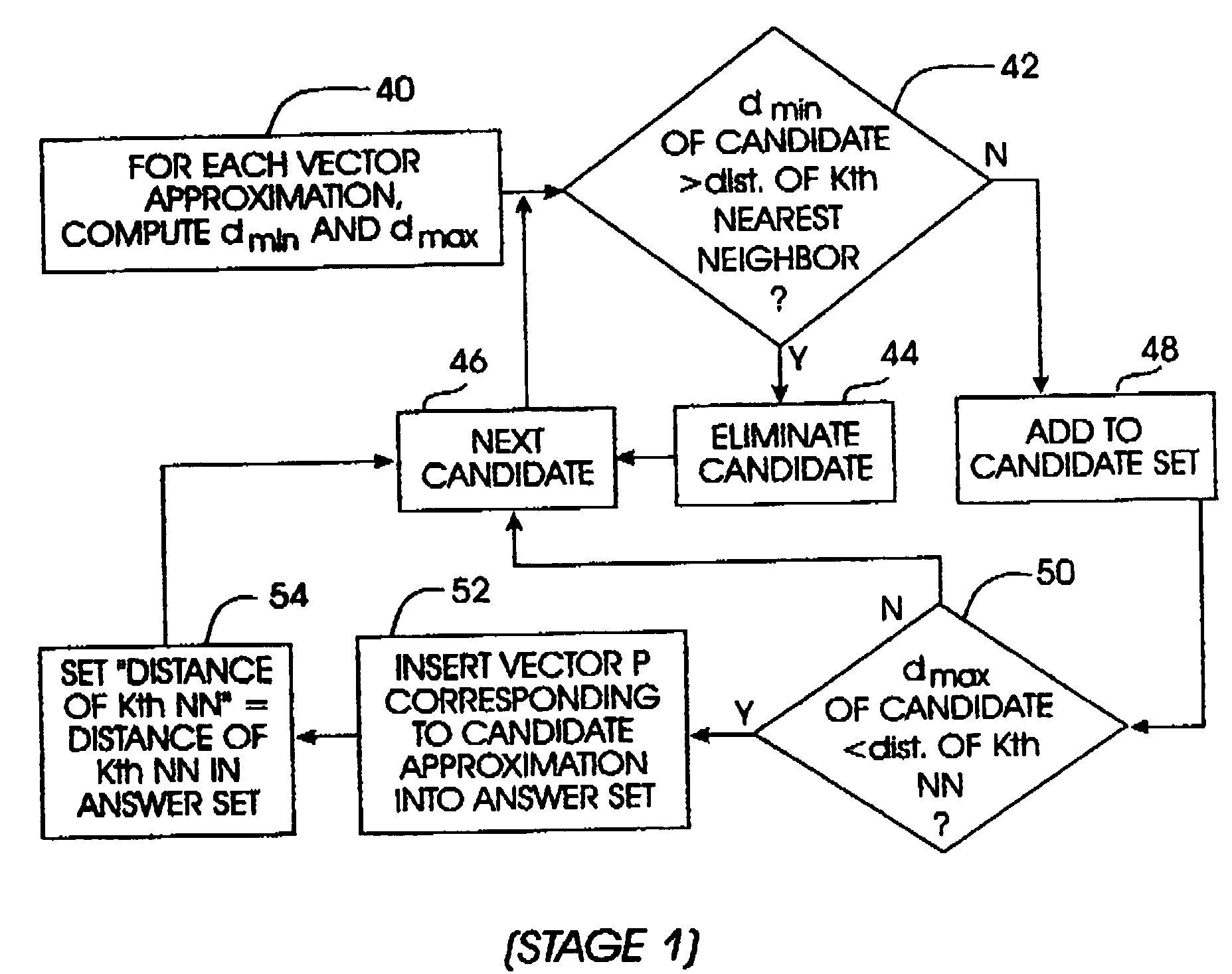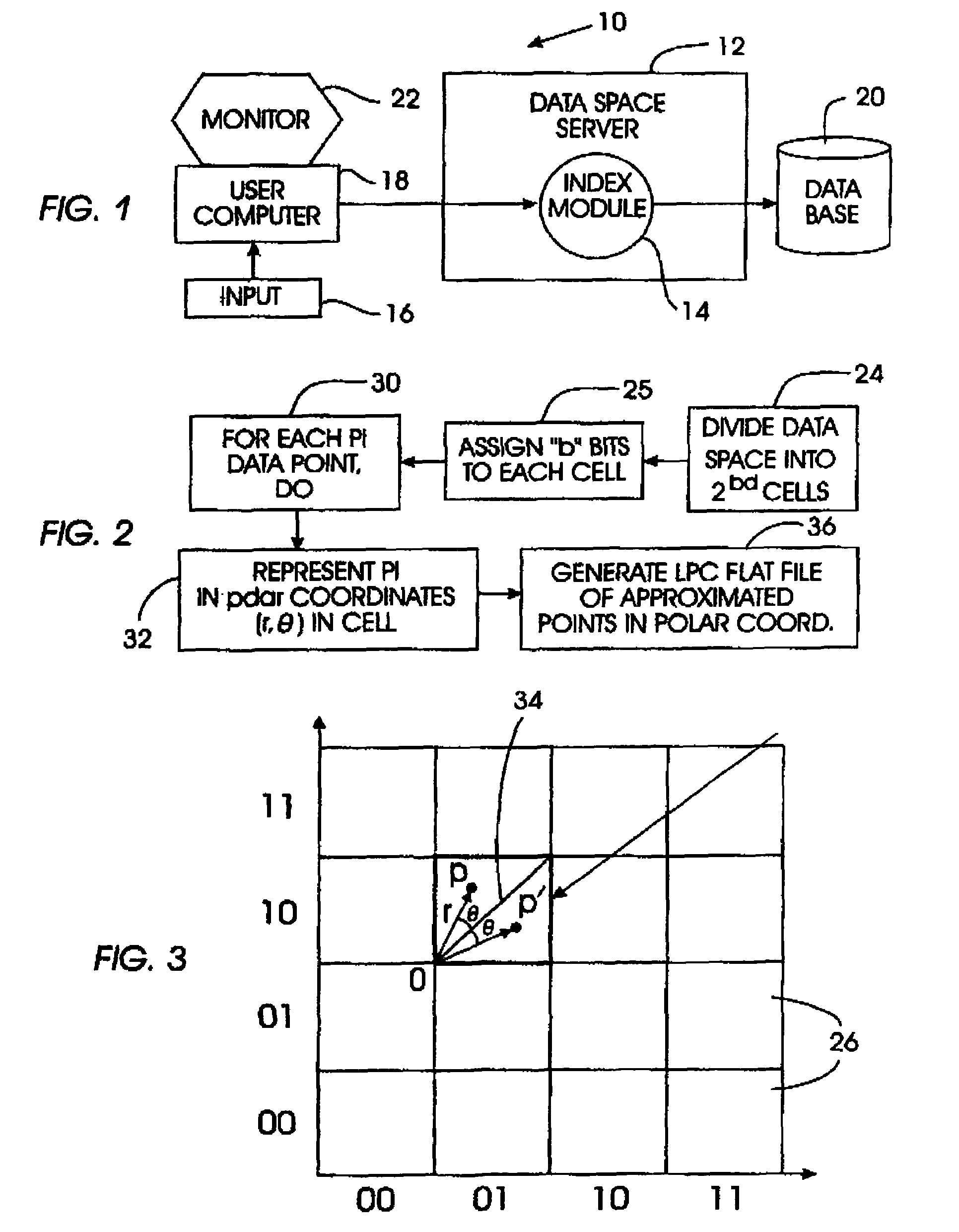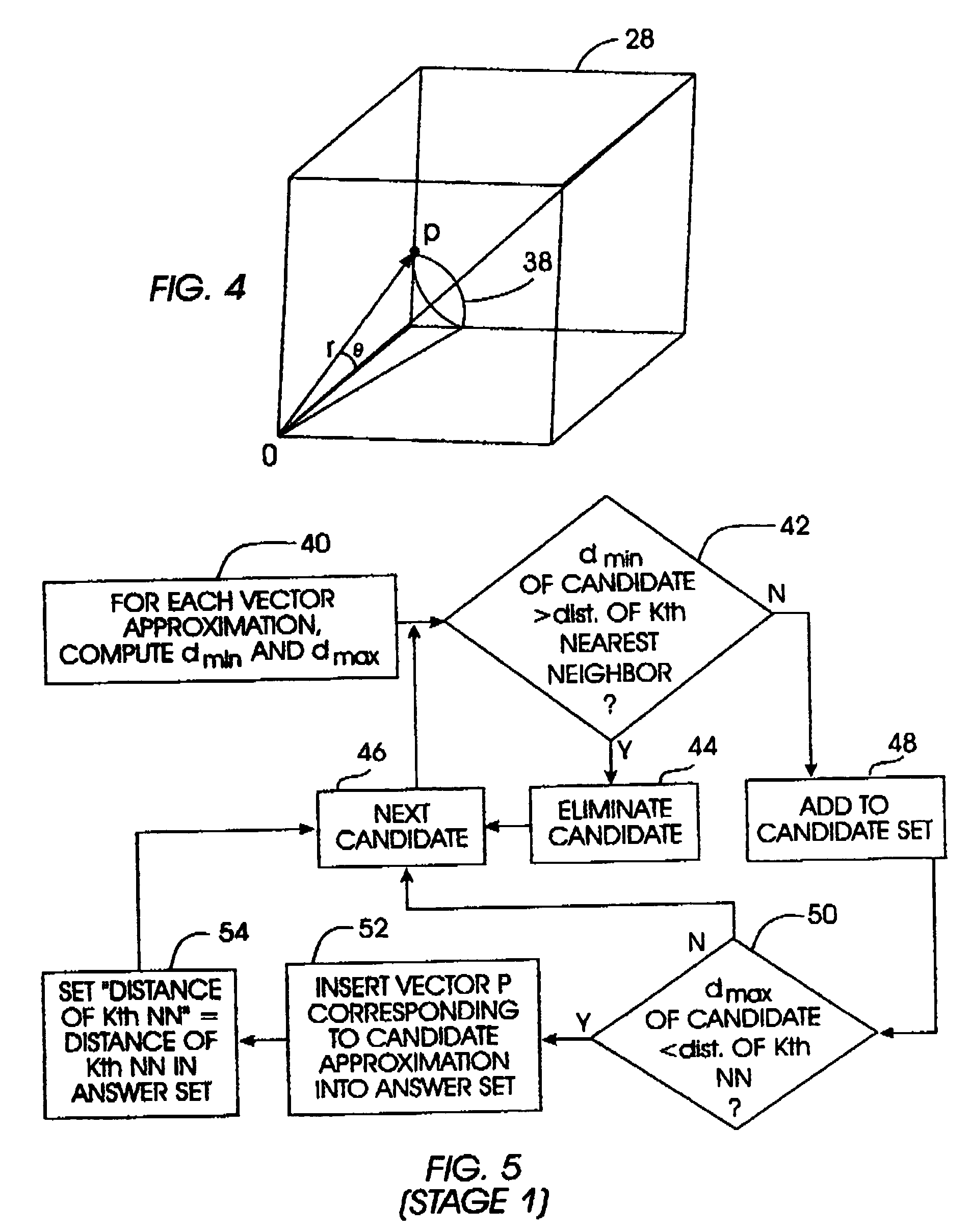Indexing system and method for nearest neighbor searches in high dimensional data spaces
a high-dimensional data space and indexing system technology, applied in the field of methods and systems for indexing objects in high-dimensional data spaces, can solve the problems of clustered data, ineffective and indeed counterproductive mims, and significant deformation of va file methods when applied to high-dimensional data spaces,
- Summary
- Abstract
- Description
- Claims
- Application Information
AI Technical Summary
Problems solved by technology
Method used
Image
Examples
Embodiment Construction
[0023]Referring initially to FIG. 1, a system is shown, generally designated 10, that includes a data space server 12 having access to a local or remote software-implemented index module 14. Using an input device 16, a user of a user computer 18 can input a query for data from a database 20, and the server 12, by means of the index module 14, accesses the database 20 and returns the requested data to the user computer 18 for display or storage thereof on an output device, such as a monitor 22. More specifically, as set forth further below, the user computer 18 sends a query for data essentially using a query vector q, with the index module 14 returning the “k” nearest neighbors (referred to herein as the “k” data vectors p that are closest to q) in response. The query vector q can be, e.g., an example image for which the user wants close matches. Other applications of k-nearest neighbor searching are contemplated herein, such as but not limited to document retrieval, data mining, pa...
PUM
 Login to View More
Login to View More Abstract
Description
Claims
Application Information
 Login to View More
Login to View More - R&D
- Intellectual Property
- Life Sciences
- Materials
- Tech Scout
- Unparalleled Data Quality
- Higher Quality Content
- 60% Fewer Hallucinations
Browse by: Latest US Patents, China's latest patents, Technical Efficacy Thesaurus, Application Domain, Technology Topic, Popular Technical Reports.
© 2025 PatSnap. All rights reserved.Legal|Privacy policy|Modern Slavery Act Transparency Statement|Sitemap|About US| Contact US: help@patsnap.com



